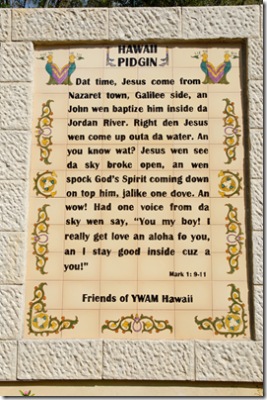See the press release below. The theory is several decades old, and few, if any, scholars hold to his view which places the Temple significantly north of the Dome of the Rock.
The Temple Mount: Where is the Holy of Holies? by Asher Kaufman, Ph.D.
Tuesday Evening, June 19, 2007; Lecture in English (there will be no Hebrew translation). Location: Jerusalem Menachem Begin Heritage Center (near the junction of King David and Emek Refaim).
Lecture starts promptly at 8:30pm and will finish with questions and answers at 10:30pm. Doors open at 7:30 pm; Cost: 20 NIS per person, payable at the door. This lecture is being sponsored and filmed by the Israel Media and Global Education Network TV (IMAGENET.TV) Dr. Kaufman will be making his book available for sale.
Dr. Kaufman was born in Edinburgh, Scotland. He received his training in physics, earning a Ph.D. from the University of Edinburgh. In the 1950’s he was engaged in nuclear fusion research. In 1959, he made aliyah to take up an academic appointment in the physics department of the Hebrew University (now the Racah Institute of Physics). Dr. Kaufman is currently Honorary Research Fellow, the College of Judea and Samaria and Emeritus Professor, the Hebrew University. His latest work, The Temple Mount: Where is the Holy of Holies was published in 2004 by Har Yera’eh Press, Jerusalem. The reunification of Jerusalem in 1967 was an electrifying event in Jewish history. For the first time in nearly 2,000 years, the Old city of Jerusalem came under Jewish sovereignty. Now with free access to the Temple Mount, Kaufman and others unknown to him at the time, were spurred on to find the pearl of Jerusalem archeological research-the location of the ancient Temple.
At first, Kaufman played with the idea of trying to fit the sanctified outer court of the Second Temple within the larger area of the Temple Mount. Later, as he perused further the ancient text of tractate Middot, he came across the passage mentioning the conduit that led from the Altar conveying sacrificial blood into the Qidron Valley. As a physicist, he suggested that sensitive physico-chemical methods could perhaps be used to detect blood remains. This idea transformed him from a plasma physicist into an investigator of the Temple.
As a research project, the blood approach was replaced by another, the red heifer ceremony (Numbers Chapter 19). Within a half a year, Kaufman, fond of measurement, was sure that he had located the Second Temple to within about a meter. His book presents an unusual combination of ancient Jewish texts and Josephus’ writings with the scientific method applied to archeological objects discovered on the Temple Mount. The research has led him to the discovery of the Foundation Stone and the architectural plan of the Temple sited on the Temple Mount. Kaufman’s scientific research offers each of us some fresh thoughts in light of a very old issue: Where is the Holy of Holies?





